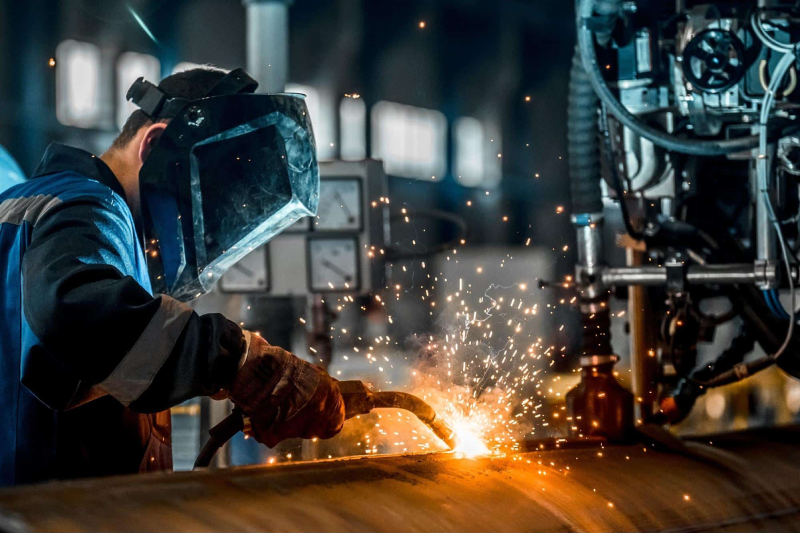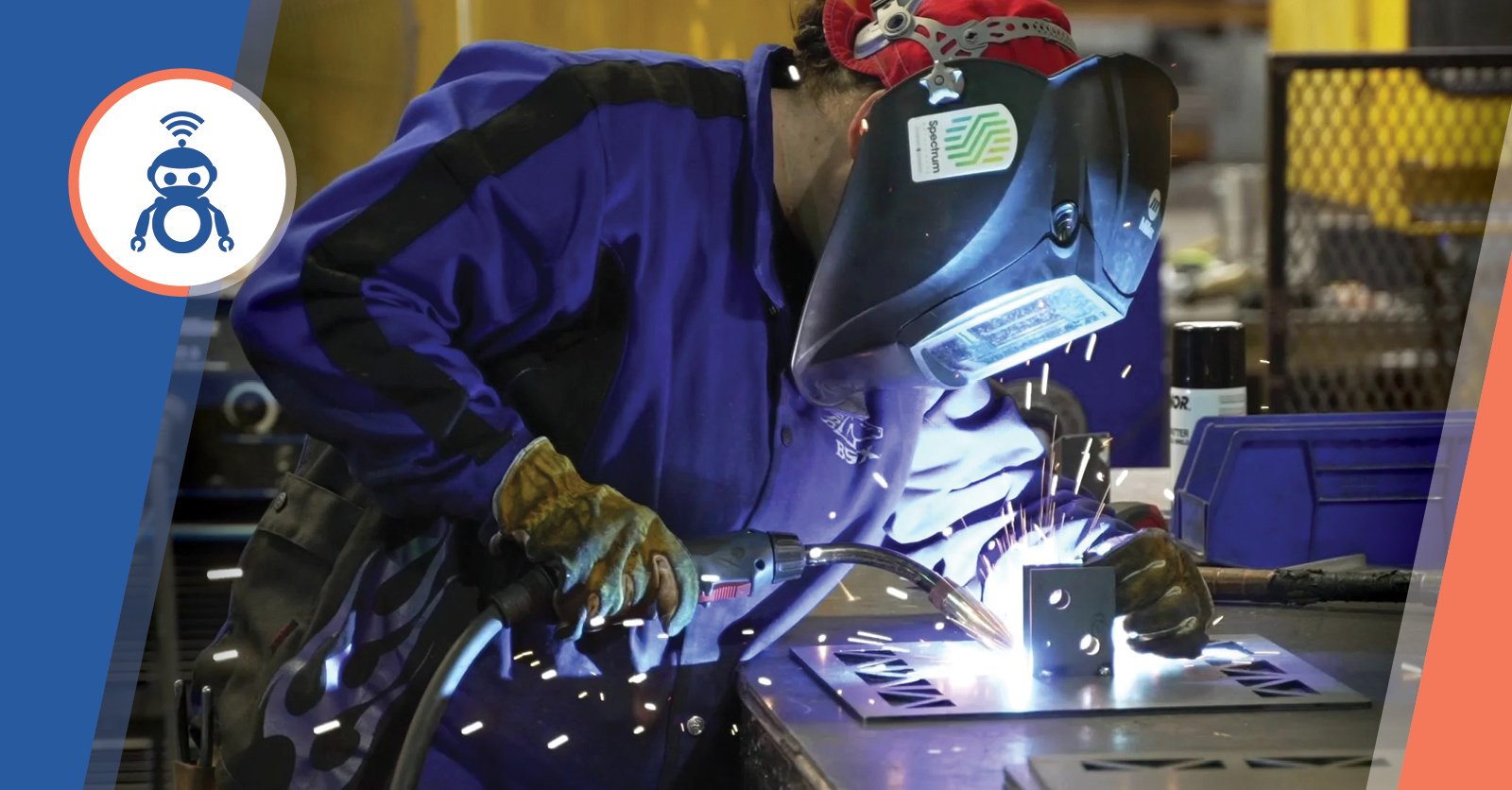Typical Welding Fixing Issues and Just How to Address Them Properly
Welding repairs commonly encounter a series of concerns that can threaten the honesty of the final product. Usual problems consist of inadequate penetration, porosity, and misalignment, among others. Each flaw offers distinct obstacles that call for certain techniques for resolution. Recognizing these issues is important for welders aiming to enhance their results and skills. This conversation will certainly explore these usual welding fixing problems and efficient techniques to resolve them.
Inadequate Infiltration
Insufficient penetration happens when the weld metal fails to fully fuse with the base product, leading to weak joints and potential structural failings. This issue frequently originates from inadequate warmth input, inaccurate electrode angle, or improper welding speed. Welders might encounter inadequate penetration as a result of a miscalculation of the required criteria for a details product thickness or kind. In addition, contamination on the base material's surface can prevent effective bonding, intensifying the trouble. To address inadequate penetration, welders ought to assure suitable setups on their equipment and maintain a tidy job surface area. Routine inspection of welds is suggested to recognize any type of shortages early, permitting timely adjustments and the prevention of jeopardized architectural integrity in bonded settings up.
Porosity
Porosity is a typical problem in welded joints that materializes as tiny gas bubbles trapped within the weld metal. This defect can compromise the integrity of the weld, leading to decreased strength and prospective failing under stress. Fabrication. Porosity generally develops from contamination, wetness, or inappropriate welding techniques, which permit gases to leave into the liquified weld swimming pool. To attend to porosity, welders must guarantee appropriate surface area preparation, maintain a clean workplace, and make use of suitable welding specifications. Furthermore, choosing the appropriate filler product and shielding gas can minimize gas entrapment. Routine assessment and screening of welds can assist identify porosity early, assuring prompt rehabilitative activities are taken, thus preserving the quality and reliability of the welded framework
Imbalance
Misalignment in welding can emerge from various elements, consisting of inappropriate setup and thermal expansion. Understanding the source is important for reliable resolution. A number of correction strategies are available to realign parts and guarantee structural stability.
Sources of Imbalance
Welding misalignment often comes from a range of underlying problems that can jeopardize architectural stability. One key cause is improper fit-up of parts prior to welding, which can lead to voids and irregular surfaces. Variants in thermal expansion throughout the welding process can additionally cause distortion, especially if the products being signed up with have various coefficients of expansion. In addition, poor fixturing and securing might fail to hold parts safely in area, bring about activity throughout welding. Improperly maintained equipment, consisting of welding devices and devices, may introduce incongruities in the weld bead, additional adding to misalignment. Driver mistake, stemming from insufficient training or experience, can likewise play a substantial duty in producing misaligned welds.

Improvement Techniques Offered
Resolving imbalance efficiently requires a combination of rehabilitative methods customized to the specific issues available. One usual technique is making use of fixtures or jigs to hold parts in the correct setting during welding, making certain constant positioning. In addition, preheating the materials can help reduce distortion and boost fit-up. For considerable misalignment, mechanical realignment techniques, such as using hydraulic jacks or clamps, can be utilized to deal with the setting prior to welding. Post-weld heat therapy may likewise be necessary to ease tensions brought on by misalignment. Ultimately, cautious evaluation and modification throughout the arrangement stage can protect against imbalance issues from coming to be substantial problems, promoting a smoother welding process and improving overall structural integrity.
Distortion
Distortion is a typical obstacle in welding that can occur from different elements, including irregular cooling and heating. Comprehending the sources of distortion is important for implementing efficient avoidance methods. Addressing this concern not only boosts structural integrity yet additionally enhances the overall high quality of the weld.
Root causes of Distortion
When subjected to the extreme heat of welding, products commonly undergo adjustments that can bring about distortion. This sensation primarily occurs from thermal development and contraction during the welding process. As the weld area warms up, the product broadens; upon air conditioning, it contracts, which can produce inner stress and anxieties. Furthermore, irregular heating throughout a work surface can aggravate these tensions, resulting in warping or flexing. The sort of product likewise plays a considerable duty; metals with varying thermal conductivity and coefficients of expansion might respond in different ways, causing unforeseeable distortions. Additionally, inadequate joint layout and poor fixturing can contribute to imbalance throughout welding, boosting the probability of distortion. Understanding these reasons is necessary for effective welding fixing and avoidance methods.
Avoidance Techniques
Effective prevention strategies for distortion during welding concentrate on managing warm input and guaranteeing correct joint style. Maintaining a consistent warm input aids to minimize thermal development and tightening, which can lead to distortion. Making use of techniques such as preheating the workpiece can additionally minimize the temperature gradient, promoting uniform heating. Additionally, selecting appropriate joint designs, such as T-joints or lap joints, can enhance security and minimize stress concentrations. Carrying out proper fixturing to secure the work surfaces in position even more help in maintaining alignment throughout the welding procedure. Lastly, staggered welding series can disperse warm a lot more equally, preventing localized distortion. By applying these strategies, welders can substantially lower the likelihood of distortion and boost the total quality of their welds.
Cracking
Cracking is a common issue encountered in welding repair work, typically resulting from various elements such as inappropriate air conditioning rates, material selection, or poor joint preparation. The incident of cracks can greatly endanger the stability of the weld, causing possible failings throughout operation. To resolve this problem, welders must initially analyze the root causes, guaranteeing that products work and suitably chosen for the details application. Furthermore, managing the air conditioning rate during the welding procedure is important; rapid cooling can cause stress and result in cracking. Appropriate joint design and prep work likewise add to reducing the threat. Implementing these strategies can enhance weld high quality and sturdiness, eventually decreasing the probability of splitting in ended up weldments.
Insufficient Fusion
A substantial concern in welding fixings is insufficient combination, which happens when the weld metal does not effectively bond with the base material or previous weld passes - Belgrade Fabrication. This defect can result in csa w47 1 weaknesses in the joint, potentially jeopardizing the honesty of the bonded framework. Elements contributing to insufficient fusion consist of not enough warmth input, improper welding technique, and contamination of the surface areas being joined. To address this issue effectively, welders ought to assure appropriate pre-weld cleaning and surface preparation, as well as change their welding criteria to attain appropriate infiltration and fusion. Normal examination throughout the welding process can additionally assist recognize incomplete blend early, enabling prompt corrective actions to boost the general top quality of the weld
Overheating
While welding fixings can boost architectural stability, overheating provides a considerable obstacle that can cause material destruction. Excessive heat during welding can alter the mechanical properties of steels, resulting in minimized toughness, boosted brittleness, and warping. This sensation is particularly critical in high-stress applications where architectural reliability is vital. Recognizing overheating can entail aesthetic inspections for discoloration or distortion, along with monitoring temperature during the welding process. To mitigate the threats associated with getting too hot, welders should employ proper techniques, such as controlling warmth input, adjusting travel rate, and using suitable filler materials. Furthermore, applying pre- and post-weld warm therapies can help restore product buildings and boost the total top quality of the repair work, making certain long-lasting performance and safety.
Regularly Asked Concerns
What Are the Usual Indications of a Welding Issue?

How Can I Examine My Welds for High quality?
To check welds for high quality, one can use aesthetic assessments, ultrasonic screening, and radiographic approaches. Each technique guarantees structural integrity, determines problems, and confirms adherence to defined requirements, inevitably boosting the reliability of the welded joints.
What Security Preventative Measures Should I Take While Welding?
When welding, one should prioritize safety and security by putting on suitable personal protective equipment, making certain appropriate ventilation, protecting combustible materials away, preserving a clean work space, and recognizing environments to prevent injuries and mishaps.
Can I Fix a Weld Without Redoing the Entire Joint?
Repairing a weld without remodeling the whole joint is feasible, depending upon the damage (Montana Mobile Welding and Repair). Techniques such as grinding, adding filler product, or using a welding process can effectively address particular defects while maintaining the surrounding structure
What Equipment Are Vital for Efficient Welding Services?
Vital tools for effective welding repair services consist of a welding maker, cable brush, grinder, protective equipment, clamps, and filler products. Each device plays an essential role in making sure high quality and safety during the repair service process. Porosity typically emerges from contamination, moisture, or improper welding methods, which permit gases to get away right into the molten weld pool. Improperly kept devices, consisting of welding devices and visit the website devices, may present inconsistencies in the weld bead, additional adding to misalignment. When subjected to the extreme warm of welding, materials frequently undergo modifications that can lead to distortion. Fracturing is a common issue come across in welding fixings, often resulting from different aspects such as inappropriate air conditioning rates, material choice, or poor joint prep work. A considerable issue in welding fixings is insufficient blend, which happens when the weld steel does not properly bond with the base product or previous weld passes.